The Gunships That Didn’t Shoot: 30 Hours Inside Two AC-130Js Over Kabul
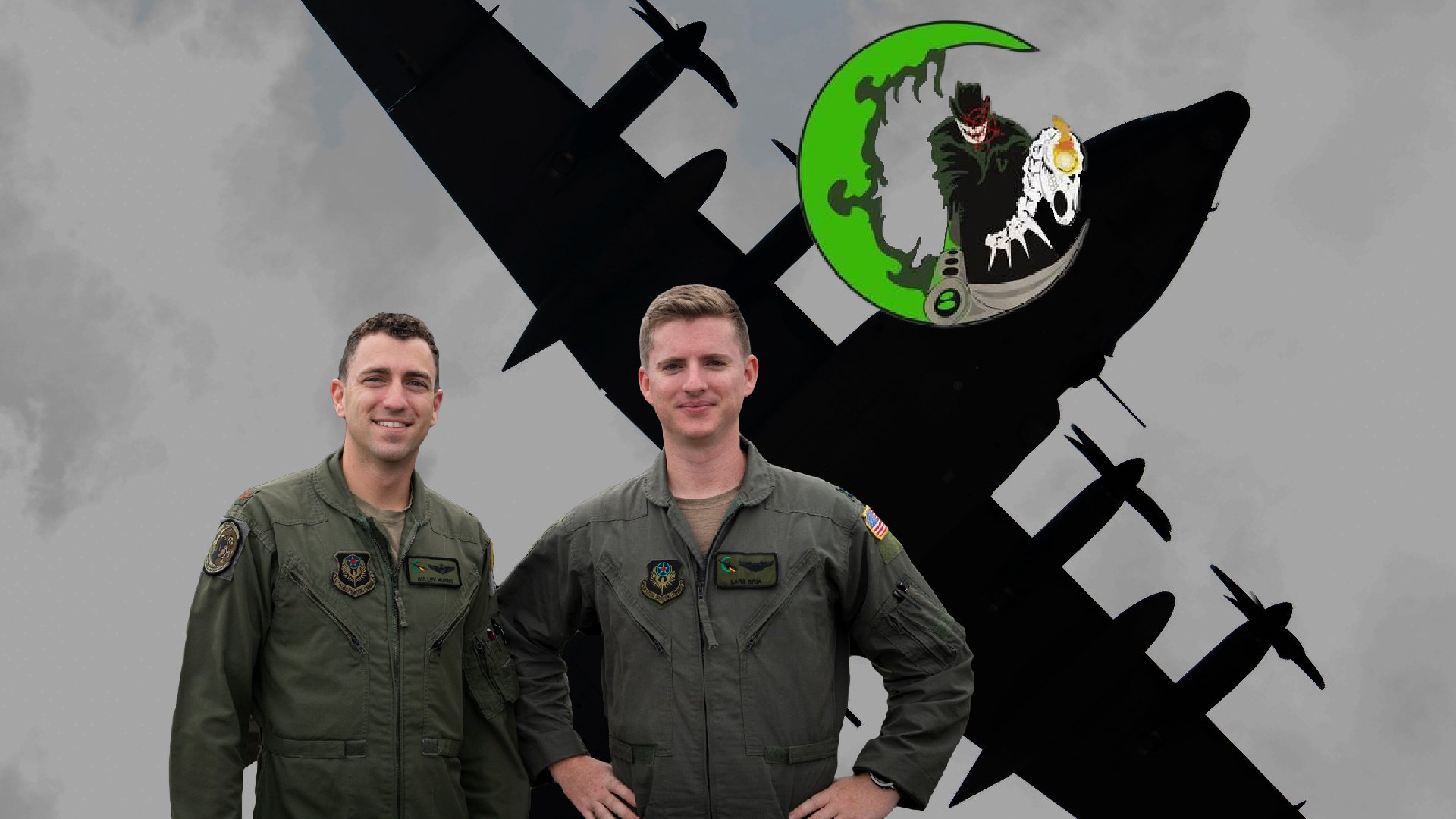
Two AC-130 crews, led by pilots Culley zzzz, flew for a combined 30 hours over Kabul on August 15, 2021, providing overwatch to the evacuation of the US embassy and the early chaotic hours of the Kabul airlift. Air Force photos.
Gunfire rang out through Kabul as a string of helicopters ferried American diplomats from the US Embassy to the airport. It was Aug. 15, 2021, and the fall of Kabul had begun.
As Taliban fighters poured into the city, two Air Force AC-130J gunships — call signs Shadow 77 and Shadow 78 — watched over the US helicopters from more than 10,000 feet up, scanning for threats in the dark — someone brandishing a gun from a rooftop or shouldering a rocket along the flight path.
At the controls of Shadow 77 was Capt. Lawrence “Lars” Bria. Though Bria was relatively early in his career, he was aware of the gravity of the mission and the evacuation underway 2 miles below.
“I’m the ripe old age of 30, so I basically grew up with this,” Bria told Coffee or Die Magazine. “It was kind of surreal to watch it all end, you know? So that was not lost on us the whole night.”
But the threats never came.
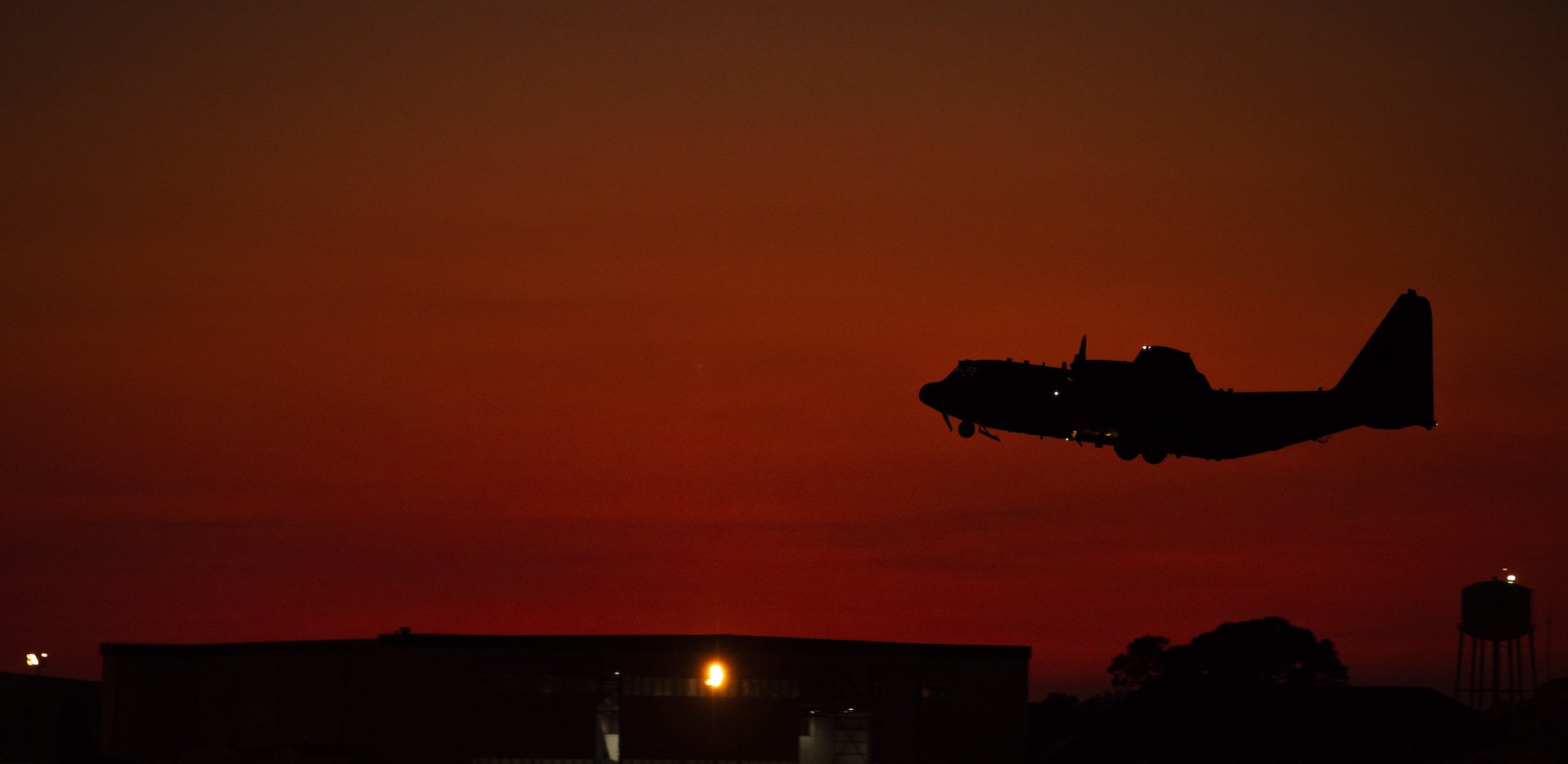
An AC-130J Ghostrider gunship assigned to the 73rd Special Operations Squadron takes off from Hurlburt Field, Florida, Sept. 26, 2019. Ghostriders are the newest, most advanced gunship in the world and is used for close air support, air interdiction and armed reconnaissance missions to support special operations forces worldwide. (U.S. Air Force photo by Airman 1st Class Joseph P. Leveille)
By the time the two gunships landed on the morning of Aug. 16, Shadow 77's crew had set a new record for an AC-130J's hours in flight. Over a combined 30 hours of flying, the gunships saw the US ambassador safely to Kabul’s airport, beamed live video back to the Pentagon and Washington, DC, and broke up crowds and other threats with green-light lasers, a nonlethal trick used by gunships to scare hostile civilian crowds away from a fight.
Through it all, Bria told Coffee or Die Magazine, the fearsome gunships never fired a shot.
“It’s always a good night in gunship world if you don’t shoot,” Bria said.
‘Alert’
Aug. 15, 2021, started out like any other flight day, Bria said.
The airmen of Shadow 77 and Shadow 78 rolled out of bed around noon at Al Dhafra Air Base, United Arab Emirates, and moved through pre-flight routines — hitting the gym, grabbing food, and other daily tasks before showtime.
In all, there were 18 crew members, including aircraft commanders Bria and then-Capt. Culley Horne. Along with a co-pilot, each plane flew with a combat systems officer, who navigated and helped run equipment such as radios and radar systems; a sensor operator and weapon systems officer, who worked the gunships’ high-tech and highly classified targeting systems; and four aerial gunners.
For weeks, the crews had worked on a three-day cycle, nearly every flight the same, circling and watching as the Taliban fought Afghan forces toward Kabul with little US involvement, Bria said.

U.S. Air Force Staff Sgt. Desiree Mosser, a weapons load crew chief aboard AC-130 J gunships with 1st Special Operations Maintenance Squadron, loads ammunition for the 30mm cannon in Okinawa, Japan on April 21, 2021. Regularly stationed at Hurlburt Field, Florida, this is the first time the updated J model of the AC-130 has landed or operated in Japan. The training demonstrates the specialized airpower that the U.S. can leverage to support the security of Japan and promote peace and stability in the region. (U.S. Marine Corps photo by Cpl. Carla O)
“[We were] slowly watching them and the Taliban duke it out, and the Taliban slowly trickle towards Kabul the whole time,” Bria said.
The Aug. 15 flights weren’t expected to be any different.
But as the crews eased their way into the duty day, word came from the ops center — the pre-flight briefing is now. Flyers walked out of the gym, mid-exercise set. Crews grabbed snacks instead of meals.
Overnight, the Taliban had closed in on Kabul, far sooner than American officials thought they could. Bria said it was no longer worth the risk to keep American personnel at the US Embassy. By the afternoon, Afghanistan’s president Ashraf Ghani had fled the country.
“We were kind of on the precipice at that point,” he said.
Spectre, Spooky, Stinger II, Ghostrider
Introduced during the Vietnam War, the AC-130 gunship has rolled through five generations. Early iterations went by Spectre, including the AC-130A, or A-model, which arrived in the late 1960s and fought in Southeast Asia, and the H-model.
By the mid-1990s, the AC-130U arrived with a new nickname, Spooky, seeing combat missions in Kosovo. The U model was the first gunship to use radar systems to find and attack targets rather than relying on strictly visual sighting.
After 9/11, gunships had near-constant work in Afghanistan and Iraq, leading to the development of the AC-130W, call sign Stinger II, in 2012. Bria's and Horne’s gunships were the latest update — AC-130J Ghostriders — and began arriving at the 73rd Special Operations Squadron at Hurlburt Field, Florida, in 2018.
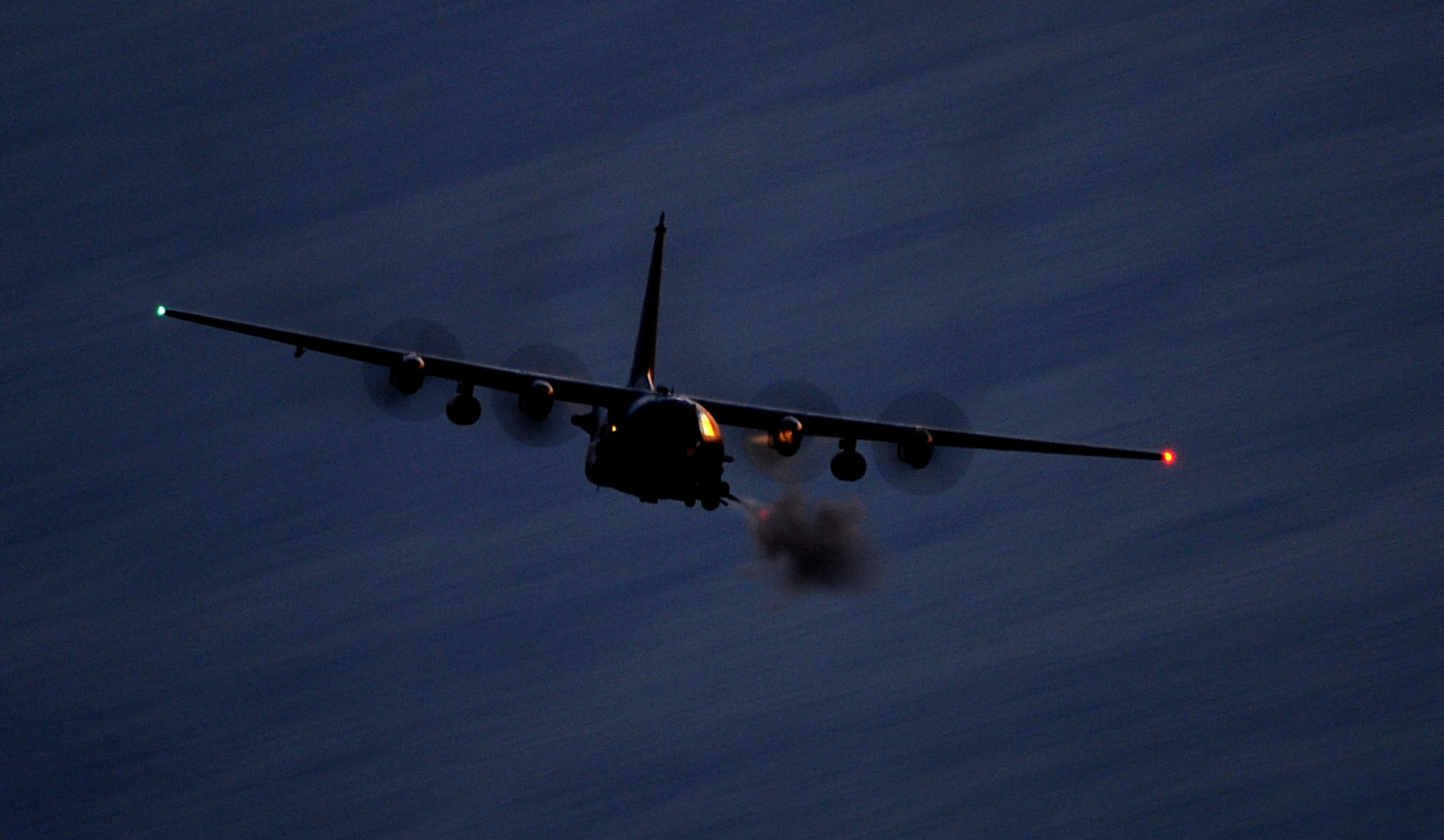
An AC-130U Gunship from the 4th Special Operations Squadron flies over the range firing its 105mm gun during a local training mission on January 27, 2011 at Hurlburt Field, Fla. The AC-130U "Spooky" gunship is the primary weapon of Air Force Special Operations Command. Its primary missions are close air support, air interdiction and armed reconnaissance. The U model is an upgraded version of the H and is equipped with side firing, trainable 25mm, 40mm, and 105mm guns. (US Air Force photo by Master Sgt. Jeremy T. Lock) (Released)
Beginning in July 2021, the 73rd's Ghostriders had been cycling through a gunship rotation at Al Dhafra in the UAE with two Stinger IIs from Cannon Air Force Base, New Mexico.
The flights were not quick hops. Every third afternoon, the crews would take off from Al Dhafra and fly four hours to reach Afghan airspace to support US and Afghan forces. After several hours on station, they’d turn south for the four-hour flight home.
Even on days with no action, the crews would arrive back in the UAE exhausted.
“We were in the grind for sure,” Bria said.
The Embassy
On Aug. 15, 2021, the grind gave way to chaos. Word came that American diplomats were evacuating the embassy for Hamid Karzai International Airport, or HKIA. At the hastily convened briefing, the crews quickly realized they would have more night to cover over Kabul than they had hours of flying. Air Force crews can’t just fly for as long as they want; they're limited to 16-hour duty days that include about two hours of prep time and 14 hours in the air.
To cover it all, one Ghostrider would launch early, the other waiting two hours. “We shifted one crew left, one crew right on the timeline, and then we could maximize gunship coverage,” Bria said. Bria’s Shadow 77 launched in the daylight to arrive in Kabul just after nightfall. “From a gunship standpoint, we don’t like to be up during sunup if we can avoid it over high threat areas. Obviously, we’re a big plane; it’s a pretty juicy target."
As Shadow 77 flew toward Afghanistan, the crew didn’t even know whether the embassy would be evacuated by vehicle or helicopter. “We basically just ‘what if-ed’ the whole flight up there,” Bria said.

TOPSHOT - A U.S. Chinook military helicopter flies above the US embassy in Kabul on August 15, 2021. Several hundred employees of the US embassy in Kabul have been evacuated from Afghanistan, a US defense official said on August 15, 2021, as the Taliban entered the capital. (Photo by Wakil KOHSAR / AFP) (Photo by WAKIL KOHSAR/AFP via Getty Images)
As they flew, updates arrived: The embassy was being evacuated with helicopters, and the Ghostriders would watch overhead as 2,000 American personnel and families loaded up on a soccer field at the embassy and made the five-minute flight to HKIA.
“[We were a] heavily armed set of eyes,” Bria said. A Ghostrider’s standard loadout includes 30mm and 105mm cannons and precision-guided munitions like GBU-39 Small Diameter Bombs and GBU-69 Small Glide Munitions, which are launched through ports in the rear ramp.
But they did not intend to strike. “The political environment [was] rather tense. We were trying to make sure we didn’t create an international incident,” Bria said. “We did have some agreement with the Taliban, so we did have to tread carefully on what we did and didn’t do.”
On Shadow 77, weapon systems officers Capt. Michael Shelor and Maj. Joshua Burris would scan the soccer field where the birds loaded with one sensor and scan the flight path for threats with the other, all while communicating with controllers on the ground.
“[Shelor and Burris] were the ones running the sensors and talking on the radio and basically being the voice of calm and reason for the guys on the ground who are going through probably one of the worst days of their life,” Bria said.
Along the nearly 5-mile flight over the tightly packed urban sprawl of Kabul, every alley, every shadow, and every rooftop could be a threat. Houses in Afghanistan have easy rooftop access, and locals would pop out to watch the helicopters. “You would kind of spend an extra second looking at them,” Bria said.
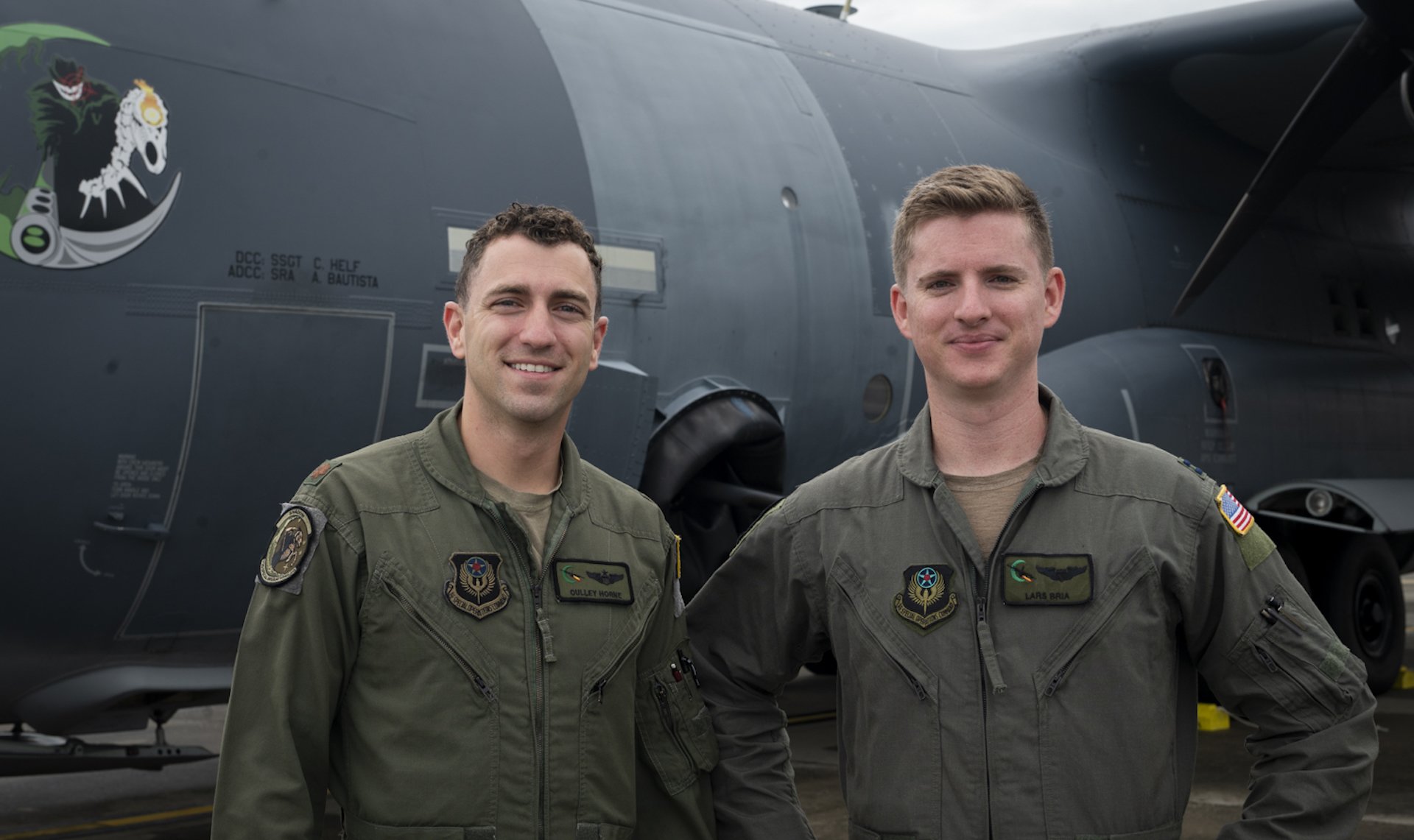
Pilots of Shadow 78 and 77, Maj. Culley Horne and Capt. Lawrence “Lars” Bria. US Air Force photo.
To make matters worse, gunfire went off regularly. “In a lot of the areas throughout the city, you would see gunfire go up into the air,” Bria said. “Thankfully, none of it was at our helicopters or near our helicopters.”
The Shadow flights were also the eyes for US leaders at home, including senior generals at the Special Operations Command headquarters and the secretary of defense in Washington, DC. “There were people all over — SOCOM and up in DC — who were watching our feeds directly to make sure the embassy evacuation was going well,” Bria said.
Shadow 77 and 78 oversaw the embassy evac with zero American casualties, and without firing their guns. “Once we finally got the all-clear at the embassy that the last bird was off the ground, and everyone was empty — it was definitely a big relief,” Bria said.
But the Ghostriders weren’t done.
HKIA
At HKIA, thousands of Afghans were heading for the airfield. “And that’s where, you know, you’ve probably seen the images of the aftermath of that,” he said. “Obviously, at that point, the local Afghan populace was starting to get very nervous and upset about what the Americans were doing.”
As they spotted people breaching the compound, the Ghostriders used their “overt” green lasers, visible to the naked eye, to spotlight the trespassers, Bria said. Forces on the ground would follow the beams to detain or chase off the intruders.
“We spent the rest of the night scanning the perimeter, calling what we saw to the ground forces,” Bria said. “If there were some people that would hop the wall or break through a gate, they would roll them up."

A crew gunner aboard an AC-130 loads 40 mm rounds in a Bofur Cannon in support of ground troops during Operation Enduring Freedom, Parwan province, Afghanistan, March 3, 2010. (Department of Defense photo by U.S. Army Staff Sgt. Billie J. Nelson Jr./ released)
Bria said the crew tracked two men as they jumped a wall and bolted for the taxiway. “They essentially ran and hid amongst some packages, some large boxes on the airfield,” he said. “So we had to highlight them in order to bring the friendly ground forces to their location to detain them.”
Right up until sunrise on Aug. 16, the gunships watched the airport perimeter, navigating the ever more crowded airspace, as AFSOC U-28 ISR planes, fighters, C-17s, and civilian jets crisscrossed the sky, Bria said.
By the time Shadow 77 touched down, the gunship had flown for 15.7 hours, requesting an extension midflight to fly longer than the Air Force regularly allowed. “Our whole day that day was, gosh, an almost 18-hour day from when we got to work, if you will — when the first brief happened — to when we finally shut down engines,” Bria said.
The flight was, officials later realized, the longest a standard Ghostrider crew had ever flown without extra members on board to relieve tired crew.
Shadow 78 logged 14.1 hours.
Along with the other crews in Al Dafrah, the Ghostrider crews returned each night during the evacuation through the end of August, circling over HKIA until the final US soldier left on Aug. 31.
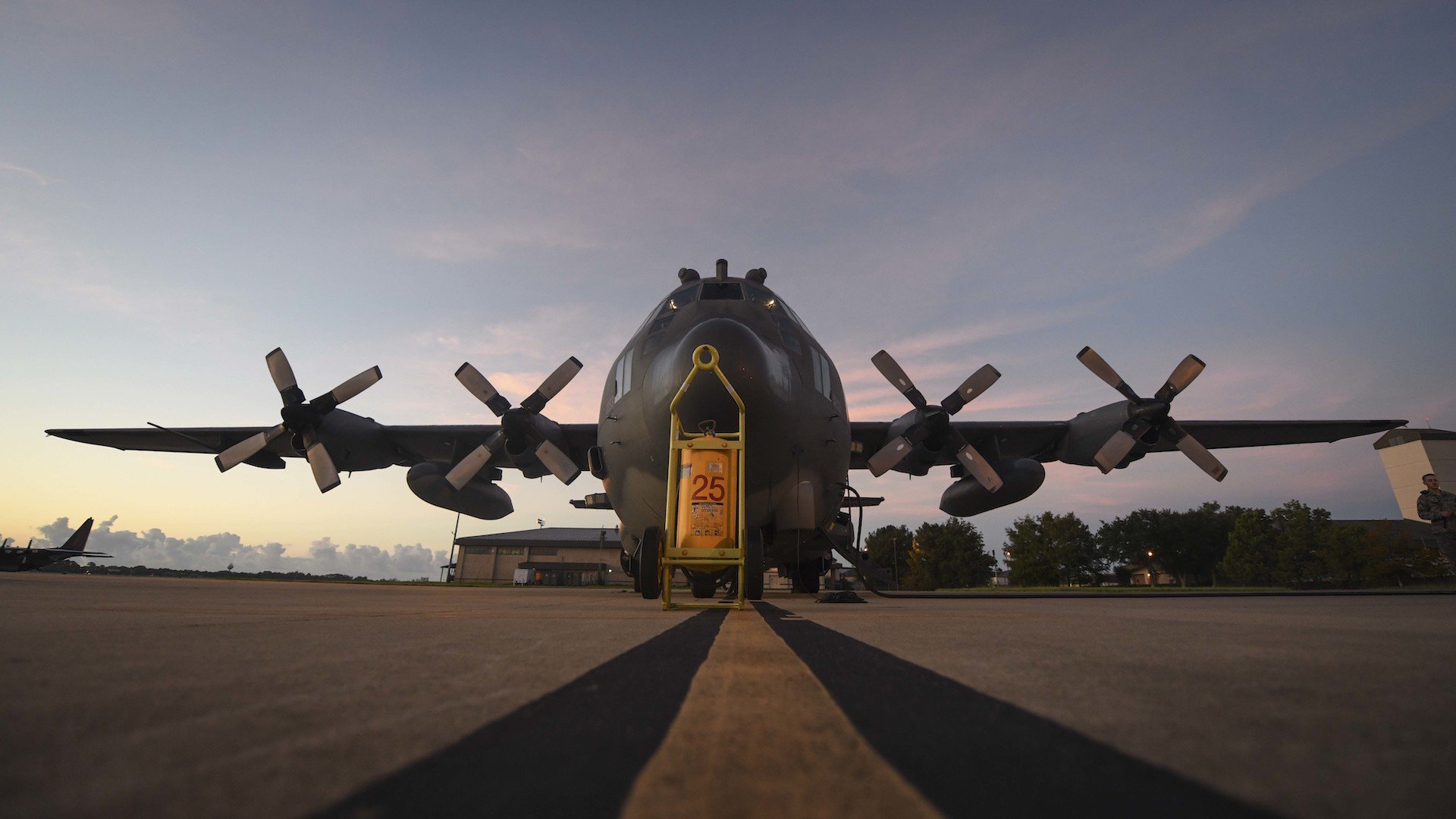
An AC-130U Spooky gunship tail number A0253 retires at Hurlburt Field, Florida, Sept. 11, 2018. Spooky A0253 was retired to the 309th Aerospace Maintenance and Regeneration Group, known as the aircraft boneyard, at Davis-Monthan Air Force Base, Arizona, after 23 years of service. (U.S. Air Force photo by Airman 1st Class Dennis Spain)
‘Riding on the Shoulders’
In December, Air Force Chief of Staff Gen. Charles Brown will present the crews of Shadow 77 and 78 with the 2021 Mackay Trophy, an award given by the National Aeronautic Association to an Air Force crew for “the most meritorious flight of the year.”
“That night was just a testament to American aviation in general,” Bria said. “There were all sorts of American aviation there that night, and I’m proud to have been part of it. As much as I love it as a win for us in the Shadow world, I definitely think the trophy was a win for everybody that night.”
“And I think some of [the win] is riding on the shoulders of the work the gunship [had done for] over 20 years in Afghanistan.”
Mackay Trophy Crews
Shadow 77:
• Capt. Lawrence S. Bria
• Capt. Sam B. Pearce
• Capt. Aaron M. Rigg
• Maj. Joshua T. Burris
• Capt. Michael G. Shelor
• Staff Sgt. Daniel J. Mayle
• Staff Sgt. Kevin P. Heimbach
• Senior Airman Denver M. Reinwald
• Senior Airman Timothy J. Cisar
Shadow 78:
• Maj. Culley R. Horne
• 1st Lt. William A. Bachmann
• Capt. Ryan M. Elliott
• Capt. Benjamin A. Hoyt
• Staff Sgt. Dylan T. Hansen
• Staff Sgt. Andrew J. Malinowski
• Staff Sgt. Tyler J. Blue
• Staff Sgt. Gregory A. Page
• Senior Airman Miguelle B. Corpuz
Read Next: Secret Mission to Kabul: The C-17 Crew That Helped Launch the Afghan Airlift
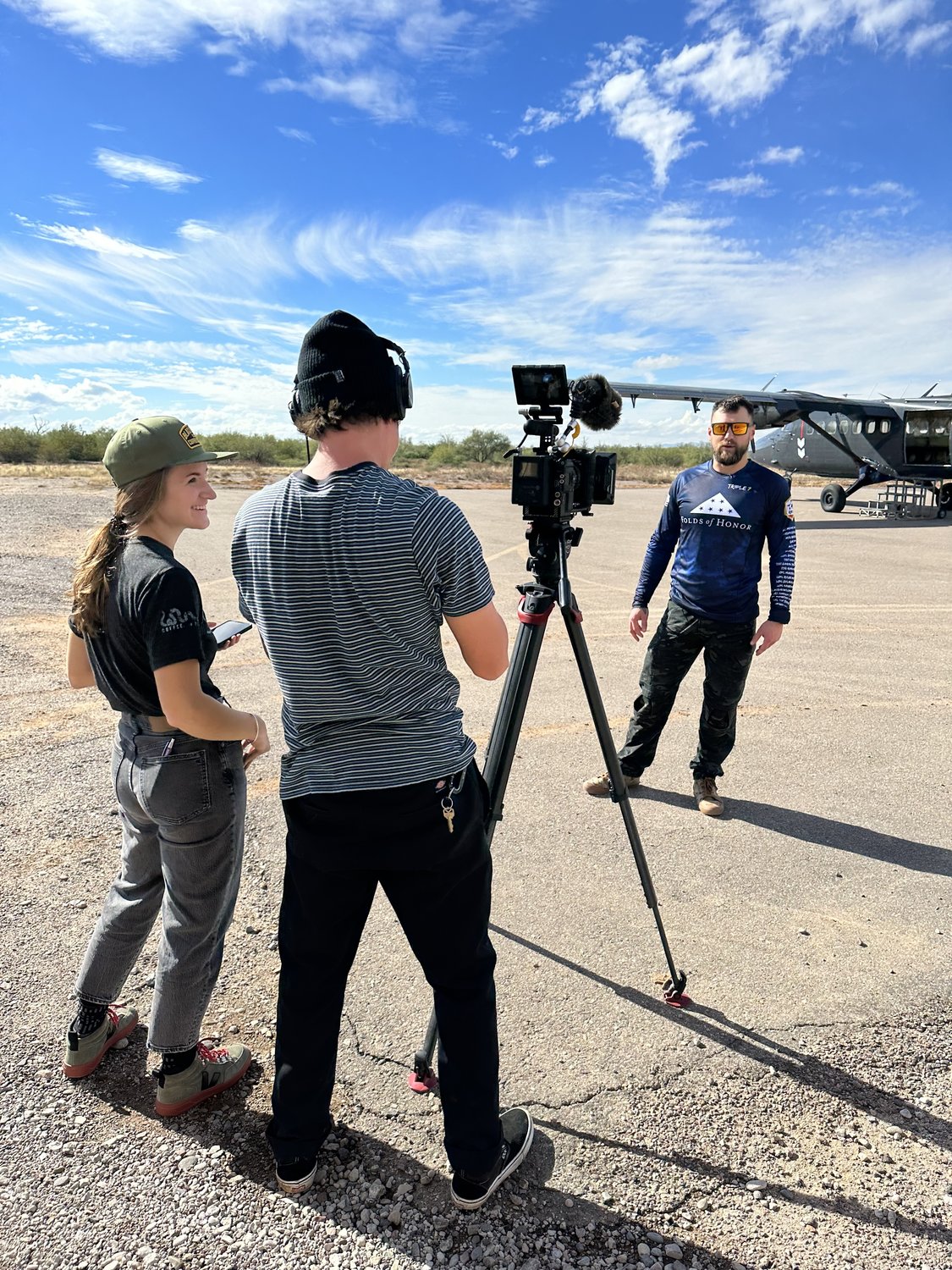
Jenna Biter is a staff writer at Coffee or Die Magazine. She has a master’s degree in national security and is a Russian language student. When she’s not writing, Jenna can be found reading classics, running, or learning new things, like the constellations in the night sky. Her husband is on active duty in the US military. Know a good story about national security or the military? Email Jenna.
BRCC and Bad Moon Print Press team up for an exclusive, limited-edition T-shirt design!
BRCC partners with Team Room Design for an exclusive T-shirt release!
Thirty Seconds Out has partnered with BRCC for an exclusive shirt design invoking the God of Winter.
Lucas O'Hara of Grizzly Forge has teamed up with BRCC for a badass, exclusive Shirt Club T-shirt design featuring his most popular knife and tiomahawk.
Coffee or Die sits down with one of the graphic designers behind Black Rifle Coffee's signature look and vibe.
Biden will award the Medal of Honor to a Vietnam War Army helicopter pilot who risked his life to save a reconnaissance team from almost certain death.
Ever wonder how much Jack Mandaville would f*ck sh*t up if he went back in time? The American Revolution didn't even see him coming.
A nearly 200-year-old West Point time capsule that at first appeared to yield little more than dust contains hidden treasure, the US Military Academy said.












